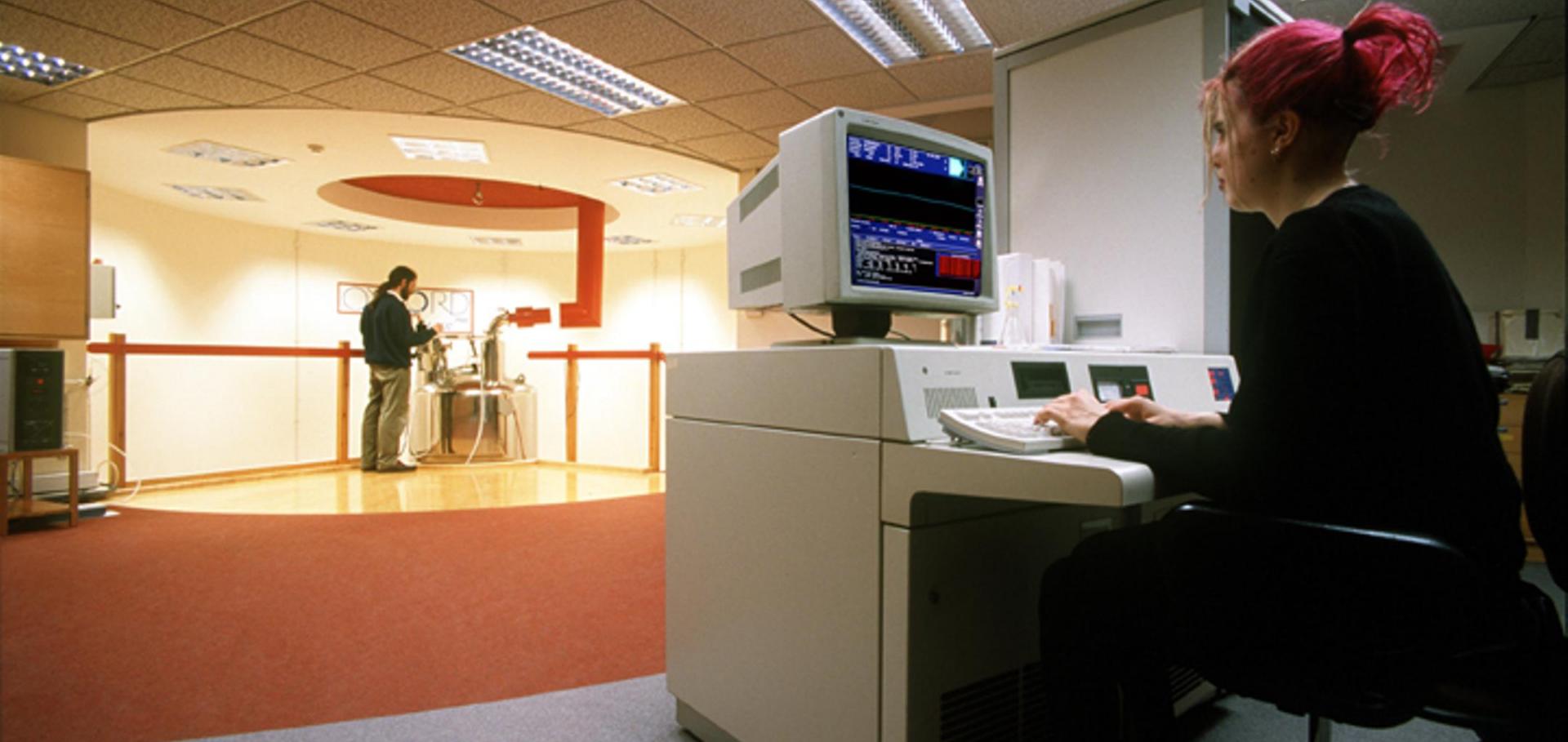Generation and interrogation of a pure nuclear spin state by parahydrogen-enhanced NMR spectroscopy: A defined initial state for quantum computation
Magnetic Resonance in Chemistry 43:3 (2005) 200-208
Abstract:
We describe a number of studies used to establish that parahydrogen can be used to prepare a two-spin system in a pure state, which is suitable for implementing NMR quantum computation. States are generated by pulsed and continuous-wave (CW) UV laser initiation of a chemical reaction between Ru(CO)3(L2) [where L2 = dppe = 1,2-bis(diphenylphosphino)ethane or L2 = dpae = 1,2- bis(diphenylarsino)ethane] with pure parahydrogen (generated at 18 K). This process forms Ru(CO)2(dppe)(H)2 and Ru(CO) 2(dpae)(H)2 on a sub-microsecond time-scale. With the pulsed laser, the spin state of the hydride nuclei in Ru(CO)2(dppe) (H)2 has a purity of 89.8 ± 2.6% (from 12 measurements). To achieve comparable results by cooling would require a temperature of 6.6 mK, which is unmanageable in the liquid state, or an impractical magnetic field of 0.44 MT at room temperature. In the case of CW initiation, reduced state purities are observed due to natural signal relaxation even when a spin-lock is used to prevent dephasing. When Ru(CO)3 (dpae) and pulsed laser excitation are utilized, the corresponding dihydride product spin state purity was determined as 106 ± 4% of the theoretical maximum. In other words, the state prepared using Ru(CO)3(dpae) as the precursor is indistinguishable from a pure state. Copyright © 2004 John Wiley & Sons, Ltd.Compiling gate networks on an Ising quantum computer
PHYSICAL REVIEW A 72:3 (2005) ARTN 032315
Error tolerance in an NMR implementation of Grover's fixed-point quantum search algorithm
PHYSICAL REVIEW A 72:3 (2005) ARTN 032326
Generation and interrogation of a pure nuclear spin state by parahydrogen-enhanced NMR spectroscopy: a defined initial state for quantum computation
MAGNETIC RESONANCE IN CHEMISTRY 43:3 (2005) 200-208
Practical implementations of twirl operations
PHYSICAL REVIEW A 71:3 (2005) ARTN 032327


